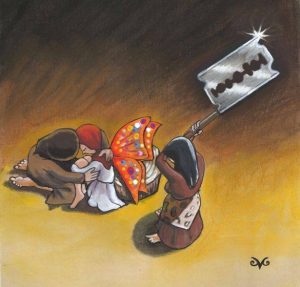By Lovina Manyara
In patriarchal societies, violence becomes a tool to control women. To combat this, we must delve into the nature of patriarchy and its connection to other forms of oppression, including racism, colonialism, and heterosexism. The intersectionality framework sheds light on the impact of violence against women of color, highlighting the failures of both feminist and antiracist movements to address this issue seriously (Crenshaw, 1994).
Understanding intersectionality is crucial for dismantling patriarchal structures of violence and empowering women. It is reflected in the distinction between racial equality and racial equity. While racial equality aims for equal opportunities and rights, racial equity goes further, seeking justice for marginalized communities.
The Convention on the Elimination of All Forms of Discrimination Against Women (CEDAW) criminalizes gender-based violence (GBV) under Article 1, acknowledging that it impairs or nullifies the enjoyment of human rights. GBV originates from traditional attitudes and stereotypes that subordinate women, justifying violence as a means of control. General Recommendation 19 underscores that GBV is structural, not a private matter, and encompasses all forms and places. Therefore, the convention provides a legal basis to combat GBV by prohibiting intersectional discrimination and employing a rights-based approach to achieve substantive equality.
Recognizing the intersectionality of GBV is essential for addressing the unique experiences and needs of marginalized groups. By adopting an intersectional lens, we can create a more inclusive and equitable response to GBV, promoting social change and empowering those most vulnerable to violence and oppression.
This process requires self-reflection, examining our own identity factors, privileges, and disadvantages, as well as acknowledging diversity within our organizations or program teams. To avoid the homogenization of program recipients, we should determine target groups through an intersectional analysis to reach those most at risk. Understanding the interconnections between discriminating identity factors is crucial for comprehending individuals’ experiences and ensuring access to resources.
During the design phase, inclusive and accessible consultations with affected individuals must be conducted. Adopting a feminist and survivor-centered approach with an intersectional perspective is crucial, in recognizing and supporting individuals’ holistic well-being. When collecting and analyzing data, consent and safety should be respected. Collaboration with community groups and associations led by and representing those affected is vital throughout the program.
By embracing intersectionality, we strive for a world free from gender-based violence for all individuals, irrespective of their social identities or marginalized status. Let us work together to dismantle patriarchal structures, challenge oppression, and create a society that upholds the rights and dignity of all.
Lovina Manyara is an Advocate of the high court; she comments on Matters SRHR in SAIC II Project




